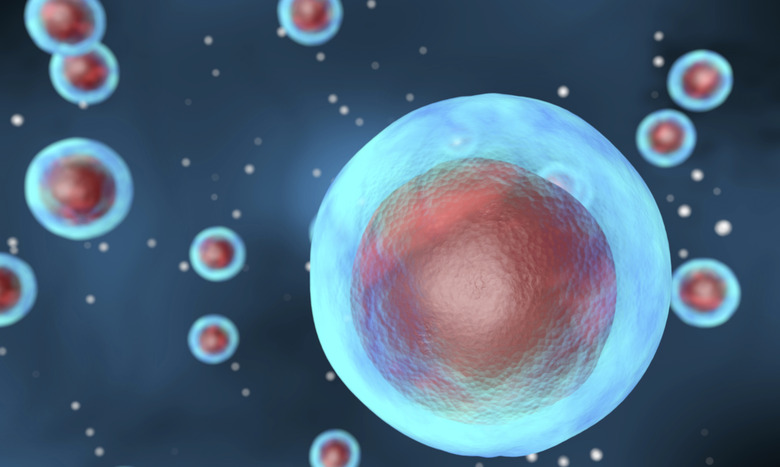3 Properties Of A Cell
The cell is the basic unit of life. Organisms can consist of one cell, known as unicellular organisms, or many cells. There are two basic classifications of cells: prokaryotes, which mostly consist of bacteria, and eukaryotes, which are more advanced. Within the two basic classes, five kingdoms of cells exist: moneran, protist, fungi, plant and animal. Eukaryotic cells share three basic properties even though each type contains specialized features depending upon its kingdom and function.
Membrane
Membrane
A cellular membrane, also called a plasma membrane, surrounds all cells. This membrane functions to give the cell shape, and to keep the internal components confined and separate from the extracellular fluid that surrounds all cells. Plasma membranes consist of lipids, fatty or wax-like substances, and proteins. The most common lipid found in membranes, known as phospholipids, contains a phosphate group connected with a glycerol group and two fatty acid chains. Phospholipids heads are hydrophilic—attracted to water, while the fatty acid tails are hydrophobic—not mixing with water, making the molecule amphiphilic, according to information found in "Biology" by John W. Kimball, Ph.D. The lipids form a bilayer, with the tails facing each other in order to accommodate the watery environment inside and outside the cell, and regulate the movement of water, nutrients and wastes into and out of the cell, as described by toxicologist Anthony Carpi of John Jay College.
Nucleus
Nucleus
The nucleus, a spherical organelle surrounded by a membrane, is the information center of the cell. The nucleus, which occupies approximately 10 percent of the cell serves two main functions. It holds the genetic material, known as deoxyribose nucleic acid or DNA. It also coordinates the activities of the cell including growth, energy conversion, protein production and reproduction.
Cytoplasm
Cytoplasm
The remaining part of the cell bound by the plasma membrane and surrounding the nucleus is the cytoplasm. The cytoplasm consists of a jelly-like matrix that holds the other organelles of the cell, including the mitochondria and endoplasmic reticulum. Proteins, amino acids and sugars used for growth and cellular reproduction are contained within the cytoplasm. The cytoplasm serves several important cellular functions. The network of filaments in the cytoplasm provides cells with shape. The cytoplasm dissolves cellular waste products. It also facilitates movement and conducts electricity.
Cite This Article
MLA
Chandler, Stephanie. "3 Properties Of A Cell" sciencing.com, https://www.sciencing.com/3-properties-of-a-cell-4239805/. 15 November 2018.
APA
Chandler, Stephanie. (2018, November 15). 3 Properties Of A Cell. sciencing.com. Retrieved from https://www.sciencing.com/3-properties-of-a-cell-4239805/
Chicago
Chandler, Stephanie. 3 Properties Of A Cell last modified March 24, 2022. https://www.sciencing.com/3-properties-of-a-cell-4239805/
